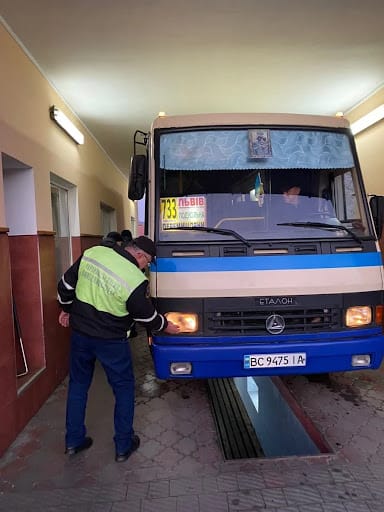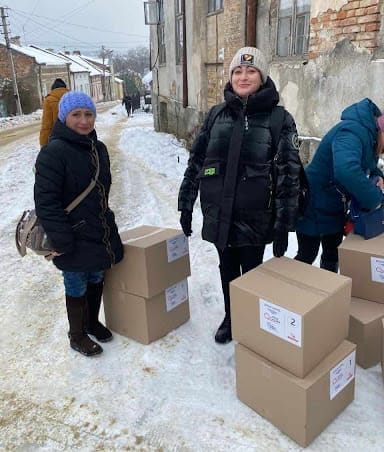This website uses cookies so that we can provide you with the best user experience possible. Cookie information is stored in your browser and performs functions such as recognising you when you return to our website and helping our team to understand which sections of the website you find most interesting and useful.
Peremyshliany Territorial Community

The Peremyshliany community unites 51 settlements, with its administrative centre in the town of Peremyshliany.
The community borders seven neighbouring communities and is located 46 km from the oblast centre, Lviv.
The climate is temperate, with mild winters, cool summers, and variable weather in spring and autumn, fostering the development of agriculture and tourism.
The community’s land fund totals 58,344 hectares, of which over 39,000 hectares are agricultural lands.
Population: 22,439 people.
Internally displaced persons (IDPs): 210.
History
Peremyshliany has deep historical roots. Archaeological findings indicate that people inhabited the area as early as the Trypillian culture (4th–3rd millennium BCE). Later, the territory became part of Kyivan Rus and subsequently the Halych-Volyn Principality.
The name Peremyshliany derives from the Old Slavic word “peremyshiyaty,” meaning “to deliberate” or “to discuss,” as the area was traditionally a gathering place for locals to address important matters. The first written mention dates back to 1437, when the settlement already had a trade and craft character.
In the 15th–16th centuries, Peremyshliany was a private town owned by nobility, developing through trade and crafts. During this period, traditions of weaving, pottery, and beekeeping were established.
During the Cossack wars, local villages often became battlegrounds, with many residents participating in uprisings.
In the 18th century, the territory came under the Austro-Hungarian Empire, introducing new administrative systems and cultural influences. This era saw the active development of schools, with the community receiving its first printed books and newspapers.
In the 19th century, Peremyshliany became a centre of national revival, hosting branches of the Prosvita society, amateur theatres, and cooperative movements.
During World War II, the community suffered significant losses: thousands of residents perished, the Jewish community was destroyed, and only remnants such as old cemeteries, a synagogue, and burial sites remain.
After the war, Peremyshliany became part of the Ukrainian SSR. The Soviet authorities developed industry but persecuted the church. The Univ Lavra was closed, and its monks faced repression. It was restored in the 1990s and is now one of Ukraine’s most significant spiritual centres.
Today, the community takes pride in its architectural and cultural landmarks:
- Univ Holy Dormition Lavra — the spiritual heart of the community and Ukraine;
- St. Stanislaus Church in Dunaiv (16th century), renowned for its unique architectural style;
- Remains of ancient fortifications and fortresses in surrounding villages;
Jewish Necropolis in Peremyshliany, attracting Hasidic pilgrims from around the world.

Peremyshliany has given Ukraine and the world many notable figures:
- Fr. Klymentiy Sheptytskyi – Archimandrite of the Studite Order, Righteous Among the Nations;
- Metropolitan Andrei Sheptytskyi, a frequent visitor to Univ;
- Community and cultural leaders, writers, and educators who shaped the region’s spiritual and cultural development.
Today, the community’s historical heritage forms a vital foundation for tourism, culture, and education, as well as an integral part of its residents’ identity.



Economy and Welfare
The Peremyshliany community combines agricultural, industrial, and business sectors. Over 30 enterprises operate in various industries:
- LLC “Elektrokontakt Ukraine” – one of the region’s largest employers, producing electrical components for vehicles;
- PP “Avtoshliakh” – passenger transport services;
- PP “Agrofirm Dzvony” – a major agricultural enterprise with over 9,000 hectares of land and its own grain elevator;
- Woodworking, food, and retail enterprises.
Agriculture remains a cornerstone, with developed crop production (grains, vegetables, fruits, berries) and livestock farming.
Education and Residents’ Welfare:
- The community operates a network of schools, lyceums, and kindergartens;
- Music schools, sports sections, and children’s clubs are available;
- Libraries and cultural centres organize festivals, exhibitions, and competitions.
Tourism is developing, including pilgrimage (Univ Lavra), cultural-historical, rural, and green tourism.



The Community and the War
From the first days of the war, residents of the Peremyshliany community stood to defend Ukraine against Russian aggression. Over 600 men are currently serving in the Armed Forces of Ukraine, with 68 community servicemen killed and 33 considered missing in action.
Residents actively participate in volunteer organizations, supporting the military by working in the rear and procuring vehicles, drones, and other equipment.
The community regularly holds charity auctions and other initiatives to raise funds for military needs.
Significant attention is given to supporting internally displaced persons. Since the war began, over 1,700 displaced individuals from Kyiv, Kherson, Sumy, Kharkiv, Mykolaiv, Luhansk, Donetsk, and Zaporizhzhia oblasts have found shelter in the Peremyshliany community, with over 200 remaining as residents to this day.

People of the Community
The Peremyshliany community is led by Mayor Oleksandr Zozulia, first elected in 2011, re-elected in 2015, and chosen for a third term in 2020.

Under his leadership, the community has implemented numerous infrastructure projects, supported education, culture, and healthcare, and actively engaged in international partnerships.
The Peremyshliany City Council fosters international cooperation through partnership agreements with the gminas of Łosice (Łosice County, Masovian Voivodeship, Poland), Skawina (Kraków County, Lesser Poland Voivodeship, Poland), and the town of Gürt (Federal Republic of Germany). These partnerships involve exchanging best practices in local governance, education, culture, healthcare, housing and communal services, energy efficiency, tourism, democracy development, and human rights protection. They also include implementing EU cross-border programs, engaging other donors and grant providers, attracting international technical assistance for sustainable socio-economic development, fostering relations between Poland, Germany, and Ukraine, and organizing festivals, literary and artistic events, conferences, competitions, art exhibitions, and fairs.
Development Strategy
The Peremyshliany Community Development Strategy until 2030 outlines two main priorities:
- Developed Economy and Investments: Supporting businesses, tourism, infrastructure, and energy efficiency.
- High Quality of Life: Modern education, accessible healthcare, safety, cultural environment, sports, and territorial improvement.
The community has potential for developing green and pilgrimage tourism, agriculture, and innovative businesses.

Sources
- Official website of the Peremyshliany City Council;
- Open data from the Lviv Oblast Council;
- Materials on the history and culture of Peremyshliany;
- Photo illustrations from local resources.
